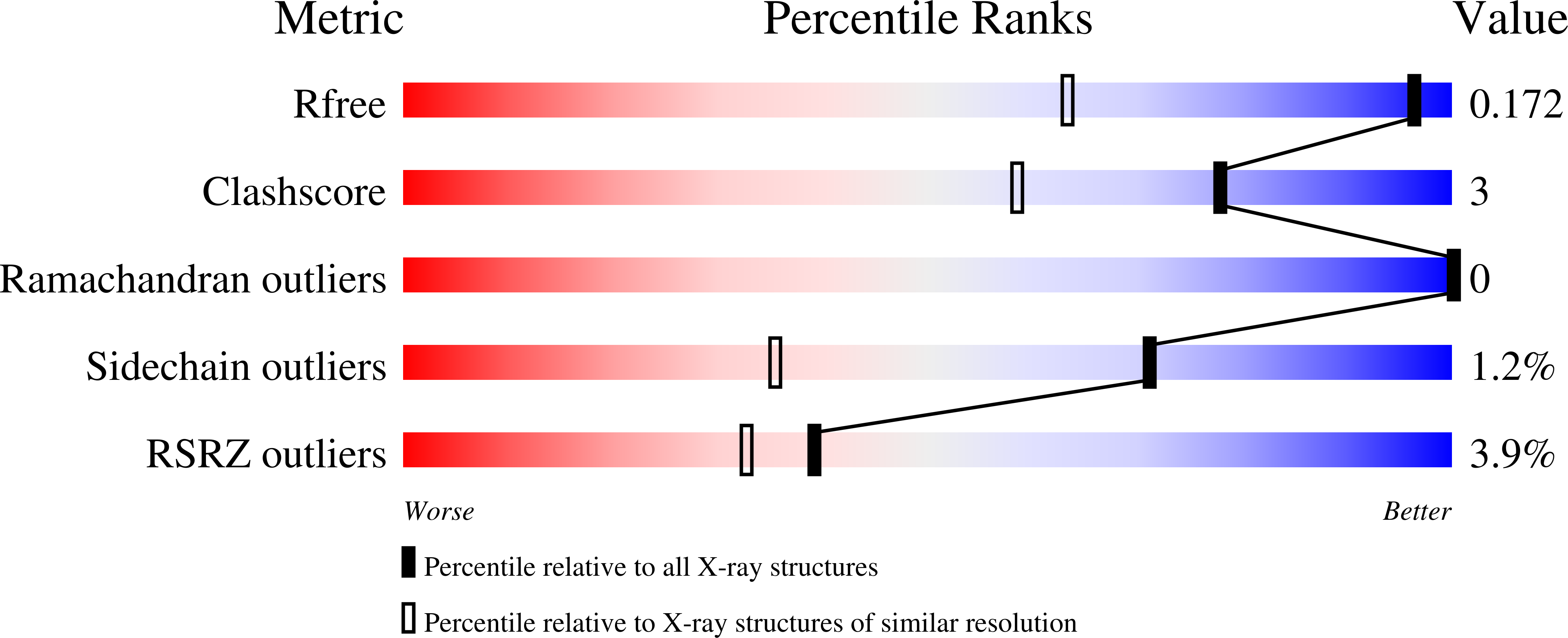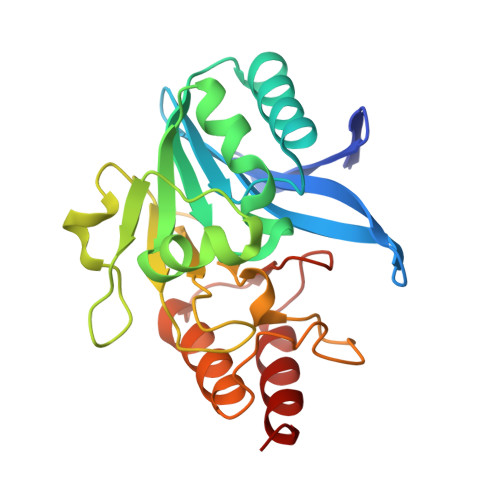Heteroaryl Phosphonates as Noncovalent Inhibitors of Both Serine- and Metallocarbapenemases.
Pemberton, O.A., Jaishankar, P., Akhtar, A., Adams, J.L., Shaw, L.N., Renslo, A.R., Chen, Y.(2019) J Med Chem 62: 8480-8496
- PubMed: 31483651
- DOI: https://doi.org/10.1021/acs.jmedchem.9b00728
- Primary Citation of Related Structures:
6D15, 6D16, 6D17, 6D18, 6D19, 6D1A, 6D1B, 6D1C, 6D1D, 6D1E, 6D1F, 6D1G, 6D1H, 6D1I, 6D1J, 6D1K, 6DD0, 6DD1, 6NY7, 6O3R, 6O5T - PubMed Abstract:
Gram-negative pathogens expressing serine ¦Â-lactamases (SBLs) and metallo-¦Â-lactamases (MBLs), especially those with carbapenemase activity, threaten the clinical utility of almost all ¦Â-lactam antibiotics. Here we describe the discovery of a heteroaryl phosphonate scaffold that exhibits noncovalent cross-class inhibition of representative carbapenemases, specifically the SBL KPC-2 and the MBLs NDM-1 and VIM-2. The most potent lead, compound 16 , exhibited low nM to low ¦ÌM inhibition of KPC-2, NDM-1, and VIM-2. Compound 16 potentiated imipenem efficacy against resistant clinical and laboratory bacterial strains expressing carbapenemases while showing some cytotoxicity toward human HEK293T cells only at concentrations above 100 ¦Ìg/mL. Complex structures with KPC-2, NDM-1, and VIM-2 demonstrate how these inhibitors achieve high binding affinity to both enzyme classes. These findings provide a structurally and mechanistically new scaffold for drug discovery targeting multidrug resistant Gram-negative pathogens and more generally highlight the active site features of carbapenemases that can be leveraged for lead discovery.
Organizational Affiliation:
Department of Molecular Medicine , University of South Florida Morsani College of Medicine , 12901 Bruce B. Downs Boulevard, MDC 3522 , Tampa , Florida 33612 , United States.

















